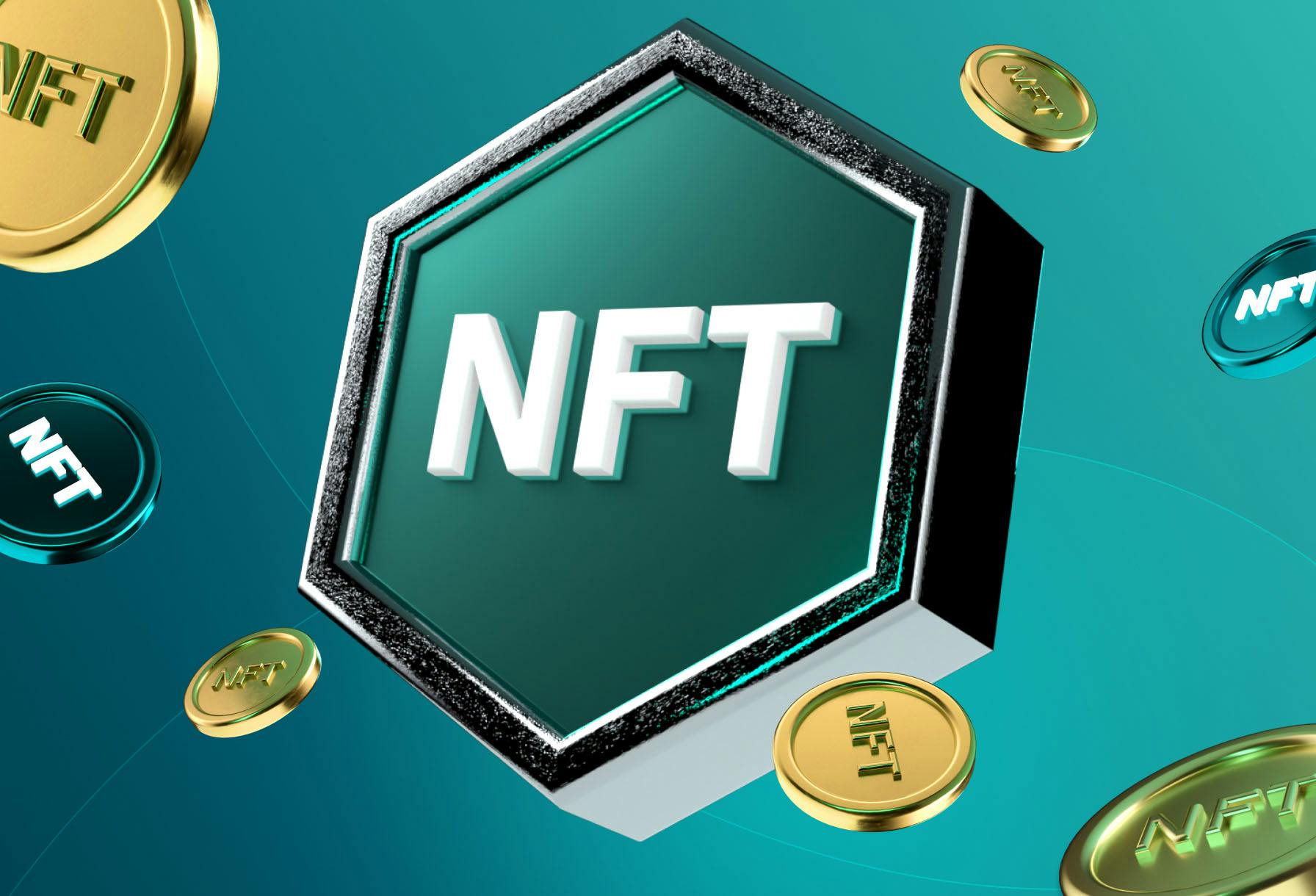
- All
- Tools
- Analytics
- Technical Analysis
- Trading
- Blockchain
- DeFi
- Guides
- Company News
- Educational
- Opinion
- Price Predictions
- Market News
- News
- Trading cases
- Practical guides
- Exchanges
- Trading signals
- Cryptocurrency
- Crypto bots
- Other
Become a crypto master
Learn everything about crypto,
trading and bots

Trend Continuation Patterns 2025: Flags, Pennants and Triangles
- Trend Continuation Patterns: Key Takeaways
- Trend Continuation Patterns: A Detailed Breakdown
- Trend Continuation Patterns: Basic Working Principles
- Why Use Trend Patterns?
- Features of Trend Continuation Models
- Many traders use trend patterns simply to understand the current trend.
- Types of Continuation Patterns
- Trading Triangles: A Continuation Pattern
- Ascending Trading Triangles
- Descending Trading Triangles
- Symmetric Trading Triangles
- Flag Continuation Pattern
- Flag Pennant Pattern
- Bullish Pennant Trend Patterns
- Bear Pennant Trend Patterns
- Rectangle Continuation Pattern
- Using Continuation Patterns in Trading
- Closing Thoughts
- Merging Trend Continuation Patterns with Automated Trading Systems 2025 Update
Start Trading on 3Commas Today
Get full access to all 3Commas trading tools with free trial period

The basis of successful trading is understanding fundamental market patterns. Patterns such as flags, pennants and triangles are used to determine or confirm the continuation of the price movement.
Whether you’ve climbed to the highest summits of trading artistry or just getting started, trends and associated tools can bring your market experience to a whole new level. This write-up is all about trend continuation patterns — be it a flag, pennant, or triangle. Once covered, you’ll be able to spot, analyze, and act upon the most popular trend patterns.
Trend Continuation Patterns: Key Takeaways
- Continuation patterns help traders to spot current and inchoate market opportunities
- Triangles, rectangles, flag, and pennant patterns are the most prominent examples of continuation patterns
- Sometimes patterns form in the middle of a trend, indicating the trend will keep growing beyond the pattern itself
- The same pattern may act differently across time frames
Trend Continuation Patterns: A Detailed Breakdown
Let’s break down the trend continuation pattern concept, why traders use it, and how you can benefit from using various patterns.
What is the Trend Continuation Pattern?
Common continuation patterns are corresponding graphical patterns on the chart, which reflect a period of temporary consolidation before the continuation of the price movement in the direction of the original trend. Consolidation appears in the form of a sideways price corridor.
The pattern is finally confirmed after a strong break of the consolidation range, which leads to a continuation of the previous trend development. Trend continuation patterns usually work out during a short or medium-term period.
Example of Trend Continuation Patterns
Continuation patterns reflect an asset's current price trend and a potential trading range. Let’s address pennant and triangle patterns, as both are quite common patterns.
Pennants are price action patterns represented in the form of a chart — it can be either a daily, weekly, or monthly chart. You can see a descending pennant in the picture above.
The triangle pattern is also referred to as a trading triangle. You can see what the descending triangle looks like in the picture above. We describe all the pattern in detail later on, meanwhile, just get familiar with a visual look for the overall understanding.
Trend Continuation Patterns: Basic Working Principles
As a rule, trend continuation patterns are good indicators of the subsequent price dynamics, provided that traders keep to a certain algorithm of working with them.
It’s necessary to determine the trend's direction before the price consolidates. With the help of short-term lines, it’s also necessary to determine which pattern of trend continuation can be formed. Once the pattern has been successfully identified, traders set appropriate stop-and-take profit levels, which assume an acceptable risk/profit ratio.
Entry is made at a confirmed breakout in the direction of the previous trend. In addition, traders should consider placing a tight stop to protect their positions from a false breakout and gradually adjust it if the situation develops favorably.
Why Use Trend Patterns?
Traders use patterns to limit the exposure of the market and find more accurate etnry/exit points. As such, patterns may either increase profits, limit risks, or make your trading more efficient by reducing the time spent on research.
In the Price Action trading methodology, trend patterns are not as crucial as reversal patterns. This is explained by the fact that the trend can develop in different ways, there are many angles to consider.
One movement may be completely distinct from the other, so it’s quite difficult to classify the trend continuation patterns across markets, which is not as applicable for reversals. However, some patterns have been identified and described — they can currently be used with a fairly high degree of reliability.
The asset’s price doesn’t move continuously, and price corrections may occur from time to time. After any stop, there is a probability that one trend pattern or another will form. In general terms, it usually happens like follows:
The market has followed the trend → a consequent price correction
Among a huge number of options of correction in the method of Price Action are those which, usually after the end, lead to a continuation of the trend. There is something similar in the graphical analysis, such as the trend continuation patterns flag and pennant. The important components of such patterns are two candles:
- The one before the formation of the correction
- The first candle after the correction
It’s usually not that easy to recognize the end of a correction. Any component of a correction may be far from the last one, even if everything points to it [for example, irregular corrections in wave theory]. But it was noted that with a certain sequence of candlesticks, there is a high probability that the trend is developing again, and traders wait for the movement in the main market direction.
Trend continuation patterns usually comprise several candles because it takes time to get confirmation. Traders can’t claim that the trend has resumed by one or two candles. It’s possible to mention the following, though — the correction ends with the reversal pattern of Price Action, it can be perceived as a kind of signal about the continuation of the trend.
Features of Trend Continuation Models
In spite of the general similarity of trading principles according to the Price Action methodology, each model is different and requires some experience, especially when we're talking about trend continuation patterns. There are some feautures to be aware of. Let's list the main ones:
Many traders use trend patterns simply to understand the current trend.
The appearance of such a combination of candles doesn’t mean that it’s necessary to enter the trade. For example, a trader enters the market when a reversal pattern is formed, which gives rise to this trend. A trader usually waits for the developments and faces the corrections, which end up as trend continuation patterns. Consequently, a trader doesn’t exit the initial trade and further waits, the final profit will increase as the price climbs higher.
A simple idea follows from the previous point - trend continuation patterns on higher periods give an understanding of the trend, which allows fans of short-term trading to have a priority direction for trades. For example, we have the "Three Black Crows" signal formed, which means that the price with a high probability will continue to move downward. Correspondingly, a trader who trades on M10 opens a sale every time the price corrects upwards on this timeframe, knowing that the main direction is bearish.
The price may correct and rebound from some level [It can be another common method of analysis — use of supports and resistances, a trend line], and then slowly pick up the trend.
- The first important point is the rebound.
- The second is the formation of the trend continuation pattern.
Not only another section of the PA technique can serve as such an auxiliary tool, but also anything, say, from the indicator analysis. This is one of the most valuable features of Price Action — it can be the only source of signals and an integral part of a more complex trading system.
Types of Continuation Patterns
After the completion of the trend continuation pattern, the price movement in the previous direction is very likely. The main trend continuation patterns are pennants, flags, and rectangles.
Trading Triangles: A Continuation Pattern
A triangle is usually formed when the top and base of the price move toward each other (like the sides of a triangle). It is often referred to as a trend continuation pattern. In practice, a trend reversal is possible with a triangle.
These figures of the analysis are characterized by some insidiousness, so they are included in a separate category. This is due to the fact that when they are formed, it’s quite difficult to uniquely determine which way the price impulse will follow — up or down.
Among such figures, we can distinguish the symmetrical, ascending, and descending triangles popular among traders. The trend preceding the formation make a big difference: if an uptrend was preceded by a bullish trend, the trend is unlikely to change its direction.
Ascending Trading Triangles
An ascending triangle — aka rising triangle — has a horizontal resistance line. With each wave, the lows are anchored higher, and the price range becomes narrower. Usually, to enter long, traders take into account the fact of breaking the resistance line or rolling back to it.
In most cases, the ascending triangle is considered by traders as a bullish pattern. The appearance of this pattern usually indicates a consolidation before the resumption of the upward price movement.
Other Features of Ascending Trading Triangles
- The upper resistance level passes through two or more approximately equal local highs
- Reliability of the figure increases proportionally to the duration of the previous uptrend
- The lower resistance line comprises at least two consequent minima, every next one of them should be higher than the previous one
- Trading volumes decrease during the formation of trading triangles
- The moment of breaking through the resistance line should preferably be accompanied by the increase of the trading volume
- After its penetration the resistance line of the figure becomes a support line
- The approximate goal of the further price movement usually corresponds to the width of the triangle formed during the upward movement.
Descending Trading Triangles
In a descending triangle, one side of the pattern is formed by horizontal support and the other by declining highs. A descending triangle is the opposite of an ascending triangle. With this pattern, traders look for entry points after a breakdown or pullback to support.
This pattern is usually formed on a downtrend, indicating common continuation. At the same time, as seen in the figure above, sometimes the price moves in the opposite direction when exiting this pattern. By its features, this figure is similar to the ascending triangle formed on the bull trend and, in fact, is its mirror reflection.
Symmetric Trading Triangles
Symmetrical trading triangles are relatively neutral figures. A symmetrical triangle reflects a situation in which the tops of prices are lower and the bottoms of prices are higher. Both sides of the triangle have the same angle of inclination. With this pattern, it’s extremely difficult to determine the price movement. A breakout can imply a price movement equal to the body of the pattern.
However, if the formation of a symmetrical triangle was preceded by an uptrend, this pattern would signal a high probability of continued bull dominance. On the other hand, the formation of a symmetrical triangle may result in a trend reversal. Hence, the confirmation of the continuation of the trend or its reversal is the direction of penetration of the sides of the triangle.
Other Features of Trading Triangles
- Trading triangles are considered reliable and signal a high probability of trend continuation if the trend lasted for at least several weeks before its formation.
- At least four points are needed to form the trading triangle pattern — two for the resistance line and two more for support (a more reliable triangle is formed by six points — three for the upper line and three for the lower line)
- As the triangle is formed and the range narrows, the trading volume should decrease.
- The approximate target for the price movement is usually determined by the width of the triangle.
- Traders should be as careful as possible when working with a triangle, especially a symmetrical one. Each time such a pattern is formed, two likely price movement scenarios should be taken into account at once.
Flag Continuation Pattern
Flag and pennant patterns usually go hand in hand, as both resemble flags — yet different in form. Both flag and pennant patterns can be either ascending or descendant.
The borders of the flag pattern are directed against the main trend. This pattern usually appears after a strong price movement. The flag pennant pattern may indicate that the bears took the correction as a reversal. It’s possible to break through the boundaries of the channel and continue the trend in the same direction. Traders open a position after the breakdown of the boundaries of the flag pennant pattern in the direction of the main trend.
Flags and pennants are formed after sharp price movements and are accompanied by a drop in trading volumes. The price movement after breaking through the borders [flag pennant pattern] depends on the intensity of the previous movement. These figures can be formed on any timeframe and are often used for intraday trading.
Take Profit may be set at 60-80% of the flag pennant pattern height, i.e. the range of the previous price movement. Depending on your trading strategy, Stop Loss can be set in the middle of the channel, which would reduce the potential losses in case the price moves against your expectations. It’s also worth noting that the formation of the flag pennant pattern only signals the possibility of market continuation, so we advise you to use additional indicators before making any trading decisions.
Flag Pennant Pattern
The flag pennant pattern is formed in a similar way to the triangle. The key difference is that the upper boundary of the pennant is downward, while the lower boundary is upward. Usually, the pattern appears after strong impulse movements in the direction of the main trend.
Bullish Pennant Trend Patterns
A bullish pennant resembles a symmetrical triangle. As a rule, a bullish pennant continues the current bullish trend. After the horizontal upper boundary of the pennant is broken, a price movement equal to the size of the pennant is possible.
Bear Pennant Trend Patterns
A bearish pennant or descending pennant is the mirror image of a bullish pennant. It appears after a strong decline [sloping upper bound] in price and ends with a triangle in the form of a pennant. A descending pennant usually continues a bearish trend.
When a descending pennant is formed, you may want to open a position right before the break through the channel’s boundary [depends on the prior trend direction]. A buy order may also be placed at the retest. For example, when a descending pennant is formed after the upward movement, you may expect a breakout, followed by the continuation of the upward trend.
Stop loss position depends on the resistance level — you can put the stop right below the resistance or within the narrowing channel range pretty close to that level. Overall, descending pennants are as reliable as any other flag and pennant patterns but less reliable compared to trading triangles.
Rectangle Continuation Pattern
Rectangle figure [price range, a price corridor, consolidation phase] on the chart is formed from the horizontal lines of support and resistance. The price enters the range after strong price impulses. The longer the price is in the range, the higher the probability of breaking through the boundary.
Rectangles are trend continuation patterns. These patterns get their name due to the fact that during their formation, the price moves within the trading range limited by two horizontal lines, forming a rectangular figure.
The period of price consolidation within the rectangle forms a number of minimums and maximums, which are approximately equal in height.
The bullish rectangle indicates the continuation of the uptrend at the end of the consolidation period, while the bearish rectangle, on the contrary, signals the resumption of the downward movement.
Other Features of Rectangle Trend Patterns
- The pattern should be preceded by a bullish or bearish trend of several weeks to months. If the trend that preceded the rectangle was very long, there is an increased chance of a dramatic change in trend [rectangles can be reversal patterns].
- The minima and maxima forming a rectangle should be approximately equal in height.
- If during the consolidation there is a decrease in trading volume — the probability of a bearish trend is high, and vice versa
- A break in the resistance line [exit from the consolidation zone] should be accompanied by a burst in trading volumes
- A level of resistance broken through will become a support for future price corrections
- The goal of price movement after the exit from the trading range is the distance between the support and resistance levels [i.e., the height of the rectangle].
- Many supporters of short-term trading during the price movement in the trading range place buy orders just above the support level of the rectangle and sell orders just below the resistance line.
Using Continuation Patterns in Trading
Trading patterns show present or upcoming opportunities, so you can monetize them. If you’re a trader with a unique perspective, you might want to add up structure following the patterns. Continuation patterns are the most popular, as they offer a wide range of diversity.
Continuation patterns supply some logic to the price action trading strategies — by knowing the patterns, you can create various strategies to benefit from common patterns repeating each other over time. The continuation part doesn’t necessarily mean the pattern is reliable, though.
Although patterns show some strong historical correlation to trends, one still can’t predict whether and when the reversal will happen all the time. Sometimes patterns show false breakouts — when the bounds are crossed slightly only to reverse shortly. False breakouts may repeat several times before an actual breakout continuation or reversal. Rectangles are quite strongly associated with frequent false breakouts. On top of trading into false breakouts, swings high in price or overholding if the asset swings low may happen.
Understanding continuation pattern ins and outs and a trading plan built upon pattern features may serve in your favor when trading. Here’s a quick list of steps you can pay attention to when being strategic about your continuation pattern trading [If you believe a pennant pattern is forming].
- Initiate a buy order upon the upper trendline [breakout]
- Set a stop loss right under the lower trendline [breakout]
- Set an additional stop loss after the breakout
- Consider doing the same steps on shorter time frames
Bear in mind that all patterns are subject to your own [or someone who’s providing signals, if you’re trading based on signals] interpretation. Some may spot a perfect breakout opportunity on the horizon, while others only see a previous resistance alternating time frames.
Closing Thoughts
In 2025, while patterns continue to provide insights into market trends and price fluctuations, it's essential to approach charts, graphs, and figure formations with caution. Their interpretation can differ based on one's experience. Moreover, there's always the possibility of encountering unexpected events like false breakouts or unforeseen market disruptions.
Merging Trend Continuation Patterns with Automated Trading Systems 2025 Update
There is a noticeable uptick in the adoption of trend continuation pattern automation—particularly common trend continuation patterns such as flags, pennants, and triangles—by professional traders and asset managers. These analytical conclusions can now be acted upon using software, more so than before, which increases efficiency and decision making.
Pattern Recognition and Execution
Automated trading pattern recognition and analysis tools—especially those focused on identifying trend continuation patterns—now come standard with modern trading platforms. For example, 3Commas developed software that allows traders to design bots capable of recognizing certain chart patterns and executing trades based on preset conditions. Specifically, using custom signals or third party signals from market intelligence platforms like TradingView allow bots to respond to these market patterns. This kind of automation reduces the need for manually watching a market and enables market changes to be reacted to promptly.
Customization, Risk Management, and Strategy Development
Custom-defined trade parameters provided by automated systems align with specific levels of risk an individual is willing to deal with, making systems flexible to varying investor objectives. Each trader can specify custom defined rules pertaining to, for instance, entry and exit levels, stop-loss, and position sizes for trades based on trend continuation chart patterns. Such flexibility enhances the exposure control and facilitates more disciplined trading.
With the rapid developing nature of cryptocurrency markets, it is particularly important to constantly monitor and adapt trading strategies relevant to the market.
Such automated tools can be set to adapt to evolving market dynamics, guaranteeing that the identification of trend continuation patterns remains precise and applicable. Routine backtesting and optimization of these strategies are crucial for the ongoing operational efficacy of these automated systems.
Final Thoughts for 2025
Incorporation of trend continuation patterns into automated trading strategies constitutes a significant shift in the precision of technical analysis. Traders can—and should—leverage specialized software to automate detection processes using algorithms built to recognize trend continuation patterns in crypto trading, improving trade execution efficiency.
FAQ
Continuation patterns, also known as trend patterns, are indicators traders use to spot present and upcoming trading opportunities. These patterns indicate whether the asset may further its movement along the trend even after the continuation pattern completes. Traders widely use popular flag pennant patterns like descending pennants or trading triangles.
Continuation chart patterns like flag and pennant patterns are trend patterns traders use to simplify market research. These charts move along or against trends, showing traders potentially profitable entry/exit, safer take profit/stop loss positions, and more.
Depending on specific trend patterns, you might want to pay attention to figure formations, resistance, and support levels across various time frames. Generally, these patterns resemble figures correlating with the pattern’s name. For example, flag and pennant patterns have flag-like appearances, while trading triangles are associated with ascending, descending, or symmetrical triangles you can spot on a chart.
Bullish trend patterns are charts/graphs representing an upward trend in the market. If the market conditions are set in stone for further growth, and most market participants feel confident enough about it, these trends may help traders to enter/exit the market for maximum profits while keeping the risks as low as possible. Trading triangles, flag, and pennant patterns are all perfect examples of bullish continuation patterns.

READ MORE
- Trend Continuation Patterns: Key Takeaways
- Trend Continuation Patterns: A Detailed Breakdown
- Trend Continuation Patterns: Basic Working Principles
- Why Use Trend Patterns?
- Features of Trend Continuation Models
- Many traders use trend patterns simply to understand the current trend.
- Types of Continuation Patterns
- Trading Triangles: A Continuation Pattern
- Ascending Trading Triangles
- Descending Trading Triangles
- Symmetric Trading Triangles
- Flag Continuation Pattern
- Flag Pennant Pattern
- Bullish Pennant Trend Patterns
- Bear Pennant Trend Patterns
- Rectangle Continuation Pattern
- Using Continuation Patterns in Trading
- Closing Thoughts
- Merging Trend Continuation Patterns with Automated Trading Systems 2025 Update




